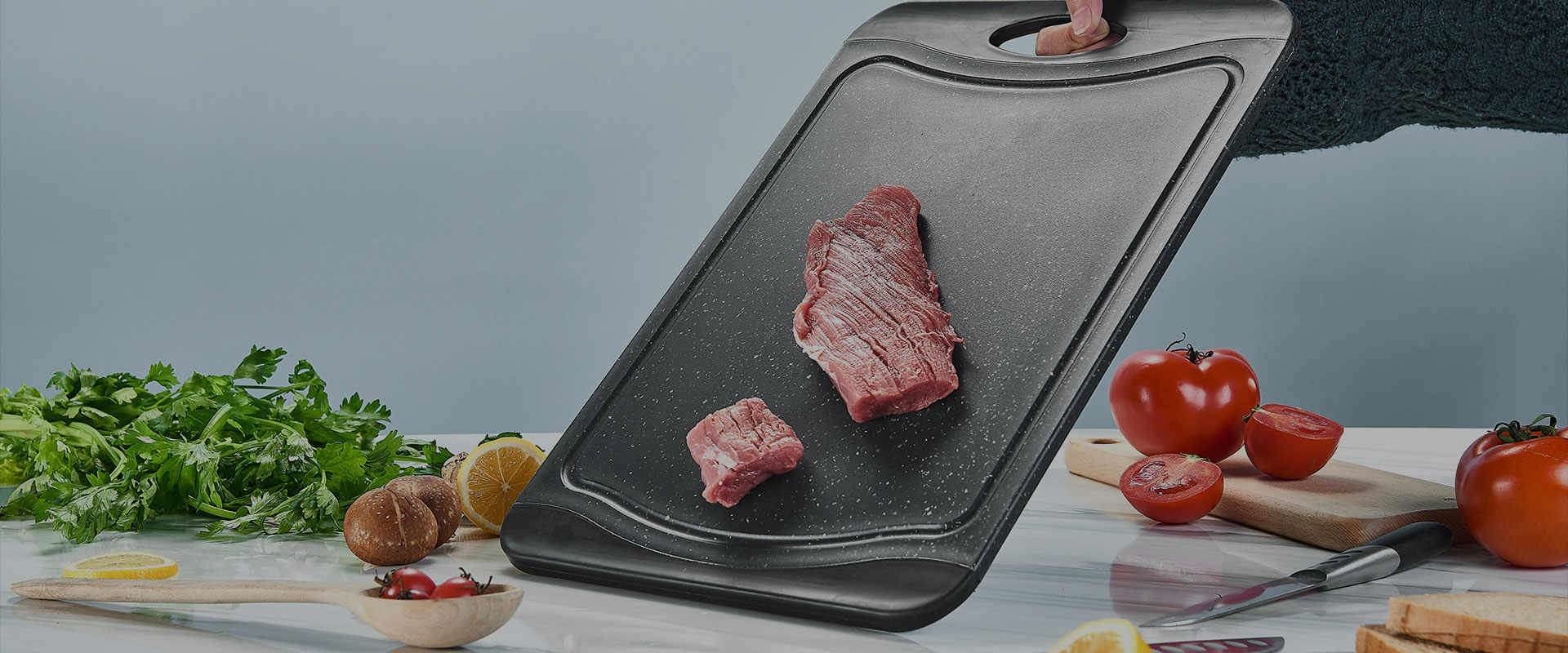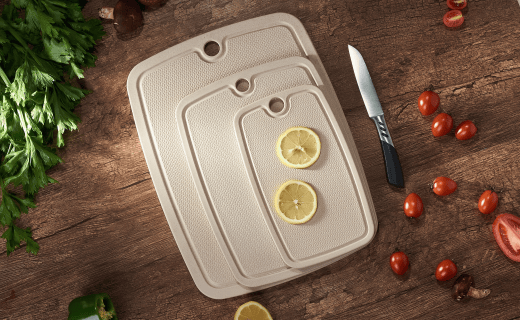 A primary slicing board serves as a core kitchen tool in most home kitchens. It furnishes a dependable and protected prep zone, and the correct option enhances your culinary routine. With an extensive range available, figuring out the first step might be tricky. No problem — this guide outlines the critical elements for selecting a suitable board.
A primary slicing board serves as a core kitchen tool in most home kitchens. It furnishes a dependable and protected prep zone, and the correct option enhances your culinary routine. With an extensive range available, figuring out the first step might be tricky. No problem — this guide outlines the critical elements for selecting a suitable board. To start, consider which materials exist. Popular options include wood, bamboo, plastic, and glass. Each alternative provides certain benefits and shortcomings. Wooden surfaces are resilient and naturally sanitary but call for ongoing oiling. Bamboo makes a renewable, sturdy, and lightweight board option. Synthetic cutting boards are affordable and washable but may dull knives more rapidly. Glass prep surfaces resist marks and are dishwasher-compatible but may break and are cumbersome.
Next, think about the size you need. A smaller board is perfect for quick tasks like chopping herbs or garlic, while a larger board offers more space for slicing vegetables or prepping for a meal. Consider your countertop available as well.
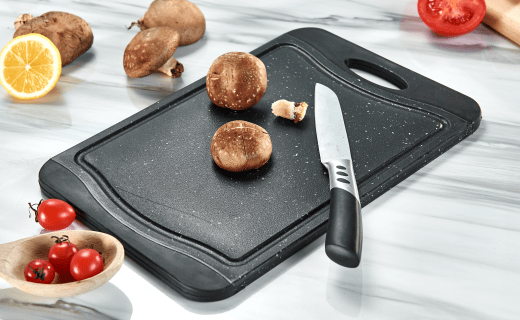
Finally, consider the overall style. A chic chopping board infuses personality into your culinary area. Choose a board that matches your existing decor and personal preferences.
Plastic, Wood, Bamboo: The Cutting Board Debate
Deciding on a board surfaces a traditional debate among plastic, wood, and bamboo choices. Each material boasts its own advantages, leading to a tough decision for home cooks. Plastic cutting boards are known for their durability and ease of cleaning, while wood boards offer a more natural feel and can be sanded and refinished over time. Conclusively, the best selection relates to your personal cooking patterns.
Evaluate frequency, task variety, and personal choice as you decide.
- Polymer cutting panels are often lighter and more affordable relative to timber boards
- Wood boards can be more visually appealing and have a longer lifespan with proper care
- Silicone chopping surfaces excel at flexibility and resisting stains yet may be less durable than plastic or timber
Top Five Cutting Surfaces for Kitchen Experts
If you're a kitchen pro, you know that a good cutting board is essential. It serves as the backbone of your kitchen for chopping vegetables and slicing meats. But with so many options out there, how do you choose the perfect one. Relax, culinary lovers — our investigation identified five boards to enhance your kitchen game.
- Our number one selection is...
- Subsequent pick is...
- A further pick is...
- Be sure to note is...
- Concluding pick is...
Maintaining Board Cleanliness: A Primer
A prep board is necessary and requires proper care for safety and prolonged use. Regularly cleaning your board helps prevent the spread of harmful bacteria.
Use these basic recommendations to maintain your cutting board well:
- Rinse the board in hot, soapy water after every use.
- Sterilize the surface using a diluted bleach solution or commercial food-safe sanitizer.
- Allow the cutting board to dry completely before putting it away.
- Keep the board in a ventilated area to halt mildew formation.
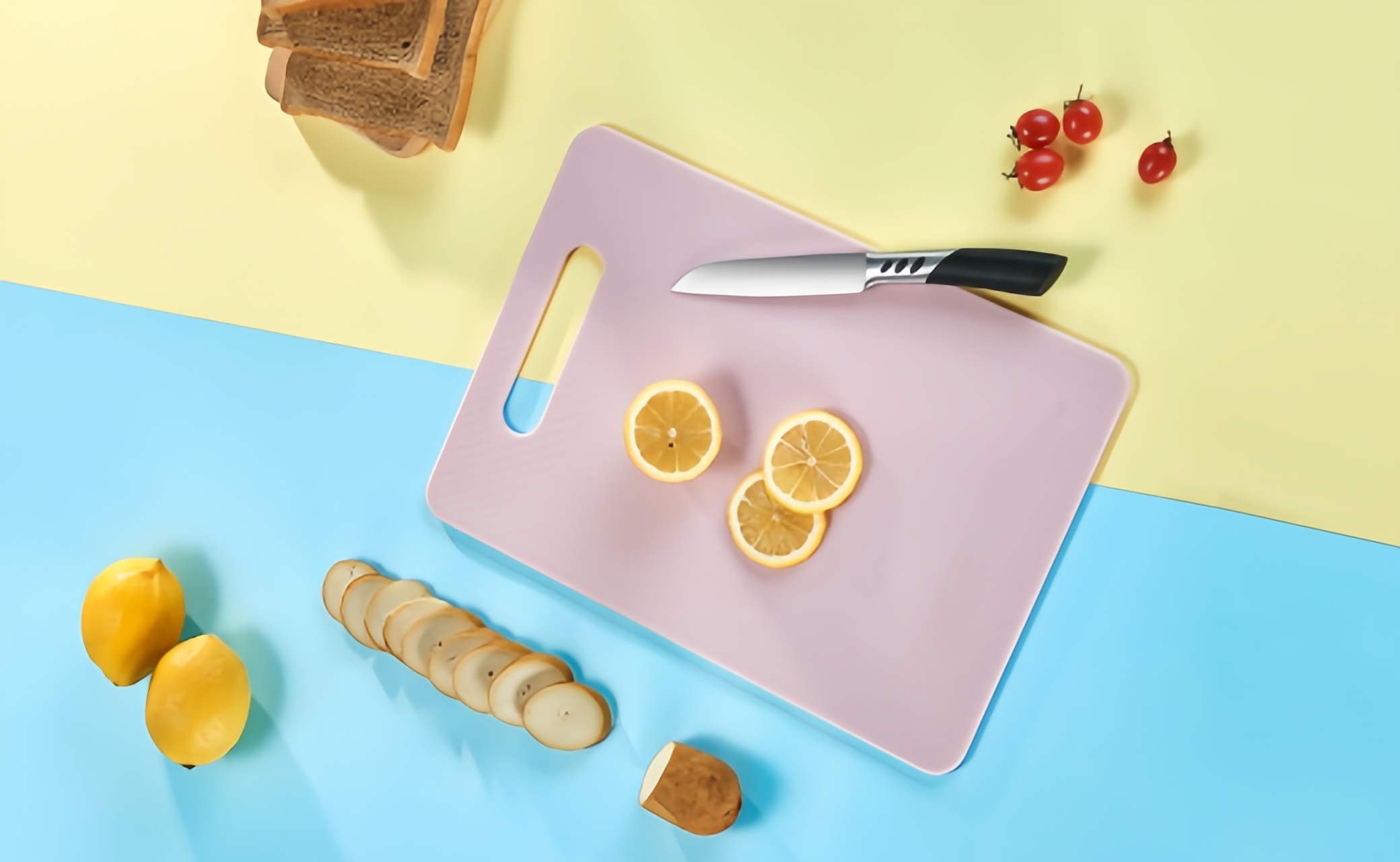
Achieving Sharp Knives on a Cutting Surface
Acquiring a keen blade edge on a board requires deliberate technique over random motions. It involves controlling force and maintaining a precise angle. Start with securing the sharpening tool at a uniform degree relative to the blade edge. Now, with each stroke, guide the tool along the length of the knife, maintaining that constant angle. Keep in mind the goal isn't heavy force but a gentle, controlled glide. While stroking the blade, you’ll perceive it getting smoother and catching less. Trial various methods to determine what yields the best sharpened edge for your knife and sharpener. When achieved, the keen edge will cut with ease and enrich your cooking pleasure.
Producing Cutting Boards for Culinary Artistry
The spotlight falls on Boardcraft Essentials, a well-known maker specializing in fine cutting boards. With generations of know-how, they turn raw wood into useful and beautiful kitchen companions. Their insistence on high standards is seen from responsibly obtained wood to skilled construction approaches.
Every board is uniquely crafted to display the inherent beauty of the wood grain. They carry diverse styles and sizes suitable for any need, from small prep surfaces to expansive butcher blocks.
- Additionally, Artisan Block Co. stocks accessories like attractive knife blocks and conditioning oils to extend durability.
- When looking for a quality board that will be loved in your kitchen, Artisan Block Co. is a top pick.
Durable & Stylish: Modern Cutting Board Designs
Refine your kitchen’s look and use with modern cutting board options. Old plain boards are outmoded—today’s choices include innovative materials and sleek forms that integrate with kitchens. Fashioned from strong woods like walnut and maple, these boards bear daily wear and add refined style to counters. From rectangular classics to contemporary geometric designs, there’s a board for every style.
- Select a finish variety to pair well with your kitchen style.
- Consider boards equipped with juice channels to keep prep tidy.
- Purchase a premium board that offers longevity for years.
Sustainable and Green Cutting Board Alternatives
When choosing out a new cutting board, consider its impact on the environment. Environmental boards are constructed from bamboo, sustainably managed timber, or recycled polymer materials. These options shrink your ecological footprint and back the earth’s longevity.
- Consider bamboo, a fast-regenerating and durable option.
- Choose wood that’s harvested from sustainable forest management.
- Explore boards crafted from recycled plastic to repurpose waste materials.
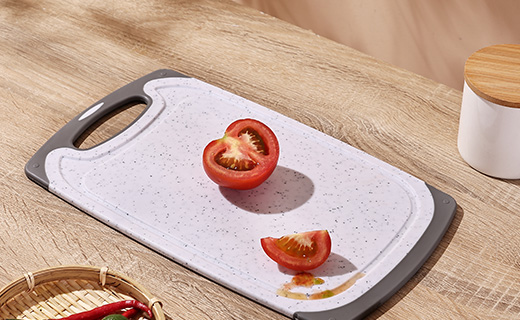
Avoid Marks: Material Guide for Cutting Boards
When it comes to selecting a cutting board, material is key. A resilient, stain-proof surface eases upkeep in the kitchen. Wooden chopping slabs are charming but can trap odors and marks. Bamboo combines strength and natural antimicrobial features for good balance. Synthetic boards are economical but often show scratches quickly. Glass boards are stylish yet may chip or shatter. Match your selection to personal needs and stylistic preferences.
Minimizing Cutting Board Accidents: Safety Tips
Maintaining the cutting board properly ensures safe food prep. Make it a rule to sanitize boards before and after each usage. Use separate boards for raw meat, poultry, and seafood to prevent cross-contamination. Don’t use sharp knives on the edge of boards—this can weaken and encourage bacterial buildup. Swap out the board once it sustains significant cuts or cracks.
best cutting board- Always cut on a stable surface.
- Maintain knife sharpness to curb slipping dangers.
- Scrub hands well with soap and water after handling uncooked food.
Upgrade Kitchen Craft with a Premium Board
A premium board serves beyond chopping produce. It is an investment that can upgrade your kitchen performance. Crafted from durable and attractive materials like hardwood or bamboo, these boards are built to last. The smooth prep areas enable precise cutting and their attractive looks augment kitchen aesthetics.
- A superior cutting board supports more precise knife control.
- Guard surfaces from scratches and deterioration.
- Present your cooking flair with an elegant and practical chopping board.
